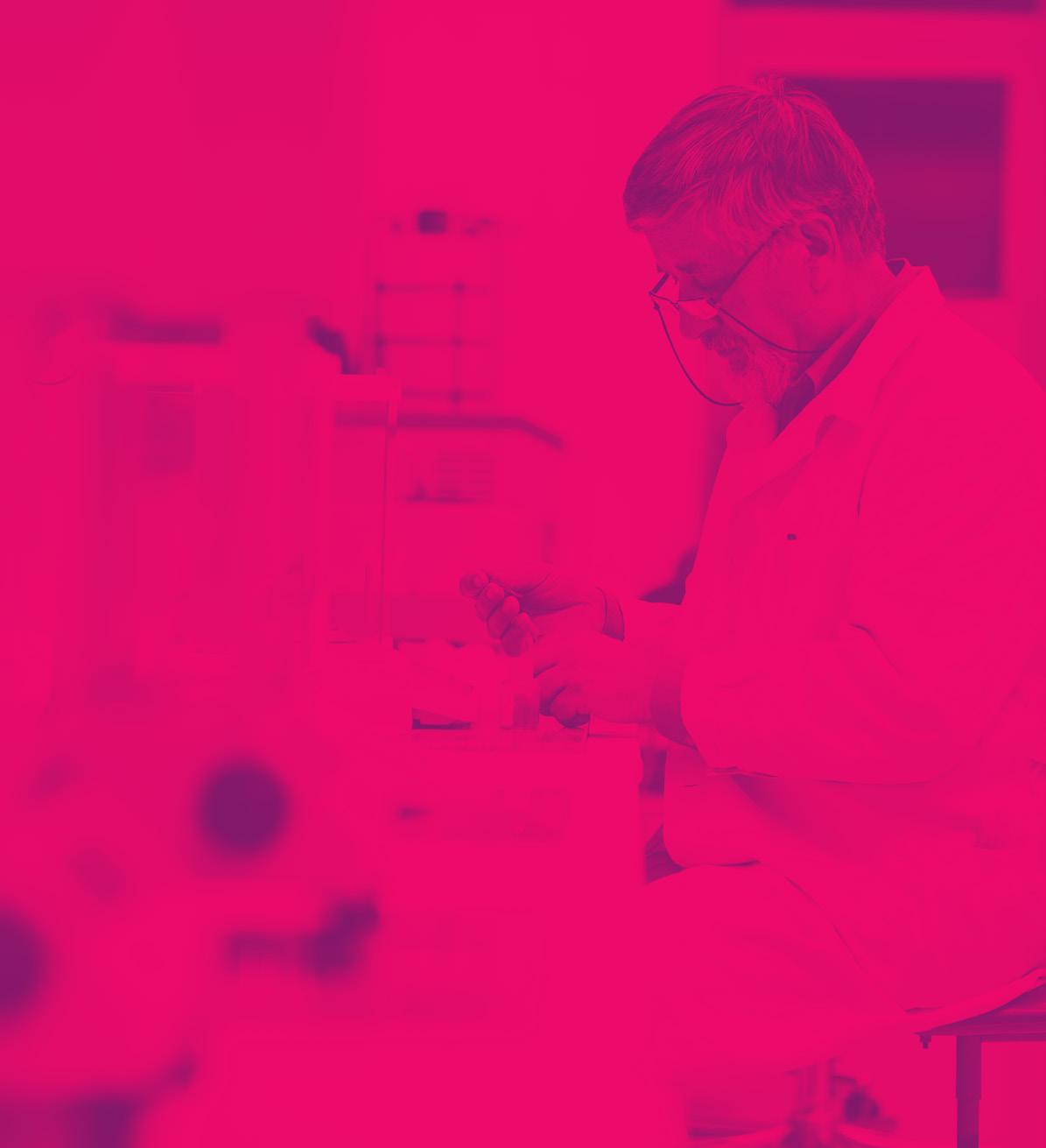
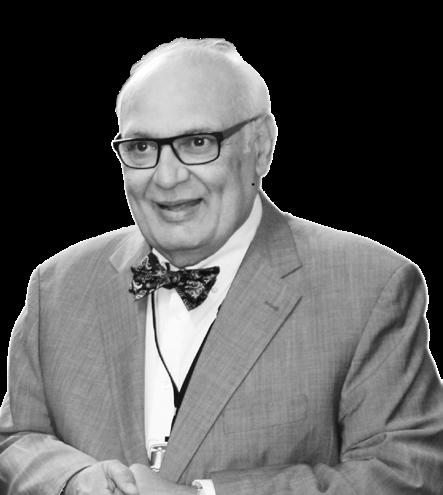

4 PUTTING THE SPOTLIGHT ON PHARMACOVIGILANCE WITH PROFESSOR SAAD SHAKIR Health Health Industry Leaders
ISSUE





TECHNOLOGY SUSTAINABILITY Overcoming Challenges to Streamline Efficiency in NHS Facilities 04 08 20 12 Mitigating the Risk of Cyber Attacks by Staying Digitally Healthy How app/device-based Health Companies can Provide Essential Support for an Over-pressured NHS Bridging the Medication Gap and Meeting Unmet Global Medical Needs Putting the Spotlight on Pharmacovigilance With Professor Saad Shakir 16 2 ISSUE 4
 Floyd March Editor
Paul Rose
Graphic Designer
Floyd March Editor
Paul Rose
Graphic Designer
FOREWORD f.march@peloton-events.co.uk
Welcome to the latest issue of Health Industry Leaders Magazine, where we delve into the transformative intersections of technology and sustainability shaping the future of healthcare. As the world grapples with unprecedented challenges and opportunities, the role of innovation in fostering a healthier, more sustainable planet has never been more critical.
The integration of cuttingedge technology in healthcare
Hannah Wintle Multi Media Journalist
is revolutionising patient care, enhancing precision in diagnostics, and streamlining operations. In this issue, we feature thought leaders and innovators who are at the forefront of these changes. You will read about groundbreaking projects and initiatives that are setting new standards for sustainability in healthcare, as well as the latest technological advancements that are poised to redefine the industry.
CONTENTS
3 HIL
OVERCOMING CHALLENGES TO STREAMLINE EFFICIENCY IN NHS FACILITIES
With over 200 trusts around the country, managing and maintaining the NHS is a massive undertaking. While spending and implementing technologies is often seen to be prioritised for front line services, the importance of efficiently managing healthcare facilities is coming into sharper focus.
Health Industry Leaders spoke to Marc Watkins, Business Development Director at Service Works Global (SWG), to unpack the necessity of facilities management (FM) in the NHS.
SWG is a company that specialises in technology to enhance estates and asset management, and their computer aided facilities management software QFM is used within NHS trusts for its reactive and planned maintenance scheduling, medical asset management, and mobile app, among other FM tools.
Ultimately, while a step removed from patients, Marc outlined how investing in facilities can contribute to positive patient outcomes, among other benefits: “We could achieve a lot with appropriate investment, but if you talk to the public or clinicians, their view is not going to be the same on where that money should be spent.



“From a facilities perspective, if you have an efficient, well operated facility that has things carefully planned, it allows for you to have good clinical working outcomes. It allows you to have good patient outcomes.
“That investment, as much as it might seem frivolous to spend on a new FM tool or mobile devices for your contractors around site, it is demonstrable how beneficial it is in the long run.”
4 ISSUE 4

THE ADOPTION OF FM TECHNOLOGIES REQUIRES A PHASED APPROACH
When it comes to addressing operational challenges in the NHS and finding appropriate solutions, Marc highlighted the juxtaposition between adopting new technology in a medical setting compared to the more managerial areas. He said: “One of the key areas, especially from an operational standpoint within the NHS, is that there’s been quite a slow adoption of new technology.
“It’s a weird contrast because in clinical fields you have these massive advancements, you get new machinery, new technology, new ways of doing things, but I think facilities and estate management and looking after the operation of the facilities are always falling behind.”
From a budget point of view, the decision between investing in medical innovation, which directly impacts the lives of patients, and facilities management technologies, can often come down to which has the greatest impact on patient outcomes.
Additionally, the implementation of new technology can be a daunting concept for a risk averse organisation such as the NHS, and this carries into the more managerial and administrative aspects too, where tried and tested solutions can be difficult to replace.
As such, the implementation of new processes should be phased and structured: “If you try and just stop them one day using forms and the next day using mobiles, you’re going to get problems and they’re going to validate those reasons why they’re risk averse. If you can present it in a piecemeal way, you’re reducing that risk and liability to them.”
As well as phasing, utilising pilot sites to demonstrate the capabilities of certain FM systems before their wider implementation can be a good way of introducing new technologies to the operational areas of the NHS, offering a safe testing environment to understand the technology, experiment with it, and observe the potential benefits.
5 HIL BY HANNAH WINTLE

FM CAN STREAMLINE THE MERGING OF NHS TRUSTS
A particular area of success for FM within the NHS is in the merging of trusts, where the end goal to utilise the available facilities more effectively uniquely positions FM companies to make the transition as seamless as possible.
In order to best assist the merging trusts, Marc highlighted the importance of painting a broad picture of how each trust operates by, rather than only consulting those on a managerial level, gathering insight from everyone including users, supervisors, and managers.
This provides a deeper understanding of what is currently working in each facility, as well as the current challenges to overcome, and enables FM firms to decide where changes and alignments need to be made.
“Let’s take the best of what they’re doing and realise that in one solution. You can only do that by engaging with those different teams.”
The phasing approach is essential here too, with systems coming into alignment gradually and prioritised in terms of what the safest solutions to implement are, which Marc explained is often planned maintenance.
“That’s something that we can have a specific team manage across the different trusts and we control how well it works. It’s important for schedules to be delivered on the day they’re expecting, but it’s not the be all and end all. So, if there are teething problems, if there are things that haven’t been thought about, such as travel between sites, we can iron those out,” he explained.
Marc also emphasised the importance of not only identifying challenges when merging trusts, but providing the solution: “Trusts will call things different things, it will be a WC in one and a toilet in another. We’d come in as experts and say, ‘we’ve taken all your data and consolidated it. Here’s a list of recommendations that we think need to be changed.’
“So we take that off their plate and we present them with the solution, because I think it’s very important. If you just present problems, if you just present things that need to be considered without actually putting what the solutions to problems are, you’re just going to get resistance.”
This is also an effective way of determining the most appropriate solution and taking the pressure of making those decisions away from the trusts themselves, where it may be unclear as to whose solution takes priority.
OVERCOMING CHALLENGES TO STREAMLINE EFFICIENCY IN NHS FACILITIES 6 ISSUE 4
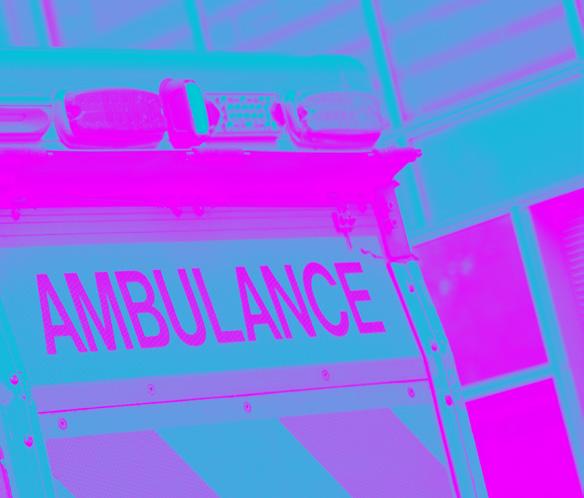
“AI shouldn’t be there to replace a person. A person that’s worked in the NHS for years will have a better knowledge about how they can do it, but these tools should empower them.”
FINDING A BALANCE BETWEEN AI AND HUMAN DECISION-MAKING
AI is a particularly useful tool in FM given its ability to identify patterns and challenges that may otherwise be missed, especially when it comes to merging trusts. For example, if AI has identified that Trust A required a certain amount of electrical works, while Trust B needed more plumbing works, it becomes clear that the same maintenance strategy can’t be deployed across the board.
Despite its obvious use cases, Marc expressed that while AI has its place in FM in the NHS, it is not a replacement for human decision-making, but rather an additional tool to make trust merges run more efficiently.
Marc said: “I think it is really important though that while AI is an exciting, cutting-edge technology, it’s not 100% there and it’s not going to be a complete replacement. I think people need to view it as something that will empower them to make better decisions, something that will give them the guidelines and the general picture that they can see and make sense of it so they can still make those decisions.
Prioritising FM can seem counterintuitive when it comes to allocating budgets, but as Marc notes, the efficient management of facilities that comes with the implementation of new technologies and streamlining trust mergers can have positive knock-on effects for both patients and staff in the wider NHS landscape.
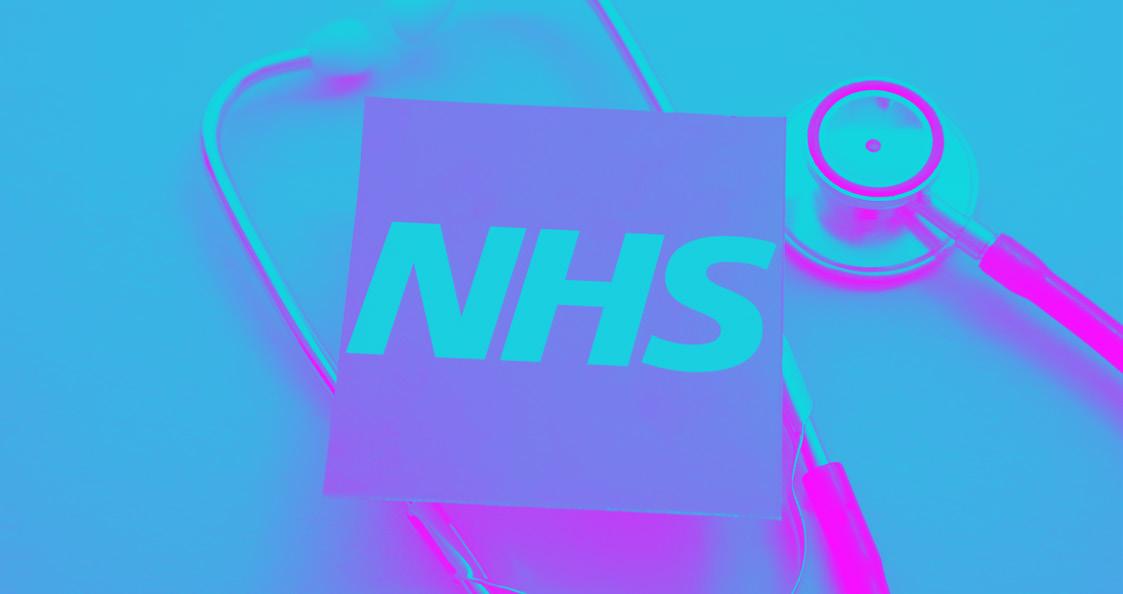
7 HIL BY HANNAH WINTLE
MITIGATING THE RISK OF CYBER ATTACKS BY STAYING DIGITALLY HEALTHY

HEALTHCARE IS THE FOURTH MOST TARGETED SECTOR FOR CYBER ATTACKS
SENSITIVE DATA AND OPERATIONAL INFRASTRUCTURE IS AT RISK
PATIENTS AND STAFF MAINTAINING GOOD DIGITAL PRACTICE IS AS VITAL AS SYSTEMIC PROTECTION
As the healthcare sector enjoys the benefits of increasingly digitised services, attention must turn to not only the physical health of patients, but the digital health of the entire system.
Ranked the fourth most targeted sector when it comes to cyber attacks in 2023, protecting healthcare is of the utmost importance to preserve the smooth running of operations, and keep sensitive data out of the hands of hackers.
Health Industry Leaders spoke to Sian John, Chief Technology Officer at NCC Group, to gain an insight into the threats at play in a modern healthcare system, and what can and should be done to abate the risks.
8 ISSUE 4

THE HEALTHCARE SECTOR HAS NUMEROUS VULNERABILITIES WHEN IT COMES TO CYBER ATTACKS
According to NCC’s statistics, the healthcare sector was subject to 53 attacks in 2023, accounting for 12% of total cyber attacks for the year.
In recent years, the WannaCry ransomware attack in 2017 was a worldwide event that afflicted over 200,000 Windows-running PCs in more than 150 countries.
It cost the UK £92 million, and brought the NHS to the brink for several days, with hospitals and GP surgeries affected throughout England and Scotland.
Importantly, it highlighted the security vulnerabilities that allow attackers to get their hands on some very sensitive data, and exploit the systems that the smooth running of the NHS relies on.
Elsewhere, the attack on a Finnish mental health organisation led to hackers directly blackmailing the individuals registered there after the refusal of any ransom payment.
With such a sinister threat to protect against, there are a number of vulnerabilities facing healthcare that must be considered and addressed to fortify defences and instil a sense of confidence in the security of the sector.
One particular threat to consider is the disruption to critical services that occurs when administration systems are targeted, which could mean certain operations can’t go ahead, potentially having a huge impact on the patient’s health and wellbeing.
The leakage of sensitive and confidential medical data is also a concern, with patients then being pressured and extorted for payment. A particularly alarming attack of this nature saw images of breast cancer patients uploaded to a leak site.
However, giving in to hacker’s demands doesn’t always mean results. Sian explained: “Paying the ransom to get your data back and have them delete the data doesn’t always work, because the National Crime Agency’s recent takedown of LockBit recently found that lots of data that was supposed to have been deleted because the ransom was being paid was still there.”
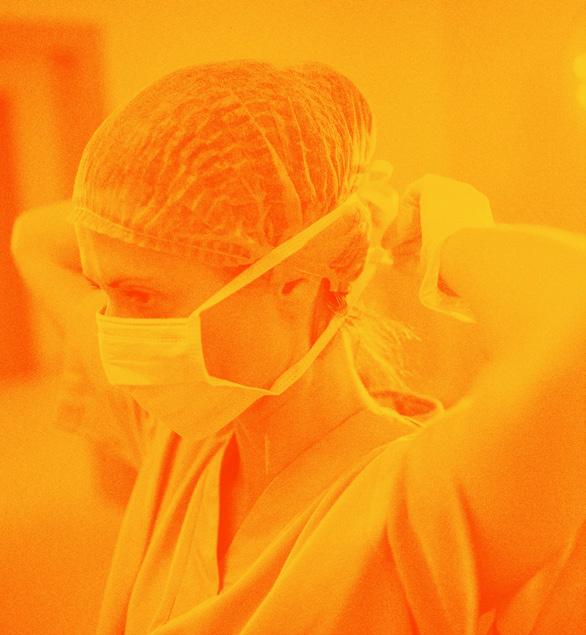
9 HIL BY HANNAH WINTLE
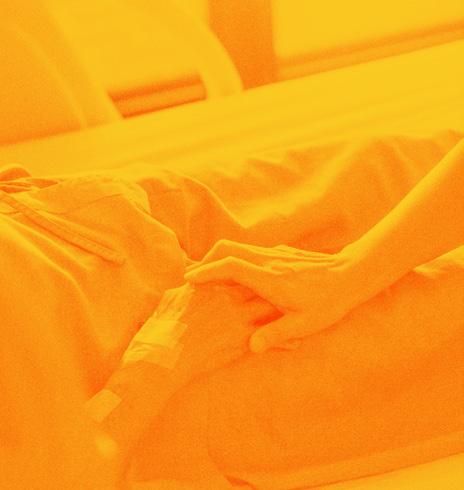
Due to these threats, and despite the understandable focus on patient outcomes, Sian emphasised the importance of allocating budget towards cyber security.
She said: “Of course in healthcare, you’ve got many things to spend your money on, but you’ve got to remember that technology needs to be part of that investment as well. Sometimes it can become the thing that people say, ‘we’ll do that next year because we can do more operations’, or whatever it might be.”
“Having a more connected healthcare sector with more devices has increased the attack surface, which has made the threat level rise, because you’ve got more things to attack and it is much more frequently targeted in general.”
INCREASINGLY DIGITAL HEALTHCARE SECTOR MEANS MORE AT RISK
Even with these vulnerabilities, the digital advancement of healthcare is continuing at rapid pace, with more and more being done to digitise services for the benefit of both patients and staff.
While there are certainly huge benefits to a more digitally connected sector, with it comes an increased threat level due to there being more connected devices to attack.

“If you think about the way we’re going with connected healthcare and telemedicine, you’ve got a lot of connected devices sitting around in homes and GP surgeries and workplaces, whether that’s things like insulin pumps or instant monitors or things like that,” Sian said.
When considering the digital threat to healthcare, it is often these medical devices that are first to be considered. However, Sian urged the importance of not overlooking the administration systems that form the basis of the digital infrastructure, as when attacked, it is this that can cause the most disruption on a larger scale.
MITIGATING THE RISK OF CYBER ATTACKS BY STAYING DIGITALLY HEALTHY 10 ISSUE 4

HOW CAN HEALTHCARE IMPROVE ITS CYBER SECURITY?
Ultimately, everyone has a hand in improving cyber security in healthcare. Fundamental cyber best practices, which Sian emphasised everyone should be exercising in every aspect of their digital lives, such as using multiple unique and secure passwords, should be followed at all times by both patients and staff.
Going passwordless provides further benefits to healthcare professionals, in that opting for facial recognition, for example, also preserves personal hygiene, particularly where shared devices are concerned.
Sian advises: “Cyber hygiene is important, as well as physical hygiene you’d have in a medical environment. So keep systems up to date, keep strong passwords, use multi-factor authentication.”
Third party devices and systems should also come with assurances of security and protection, and companies like NCC can test hardware and offer advice on how to protect it.
Bolstering security around sensitive data is of particular importance too, so that if a hacker does manage to get into any systems, the data is still protected.
“The challenge you’ve got in hospitals,” Sian highlighted, “is that you need to put the protection around [the data] as it is very sensitive, but also make it easy to access by a doctor in a life saving situation. That can be done. It’s about putting the planning in place.”
“Obviously there may be some things [healthcare professionals] have to do slightly differently to be more secure, but as long as that doesn’t create too much friction between that and their primary job, which is healthcare provision, that’s the important thing.”
Ultimately, as the digitisation of healthcare advances, so too do the risks. However, with companies such as NCC continuously monitoring the threat landscape and offering routes to a healthier digital environment, protection is possible, and with it, the benefits of a digitised healthcare service can be maintained.
11 HIL BY HANNAH WINTLE
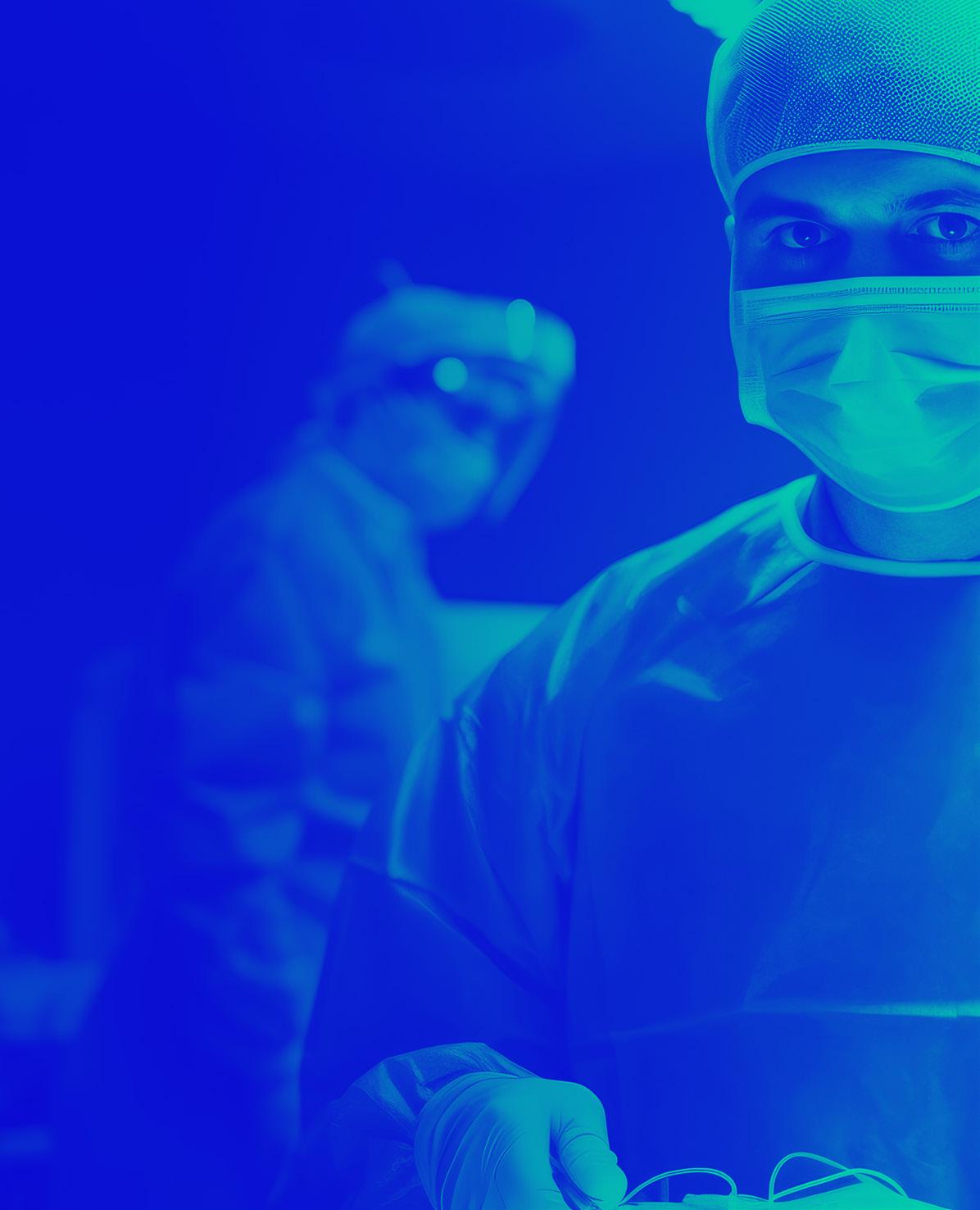
BRIDGING THE MEDICATION GAP AND MEETING UNMET GLOBAL MEDICAL NEEDS
Modern medicine can give healthcare professionals the world over the power to cure and treat billions of patients in need, but when access to treatment is limited, some patients can get left behind.
To explore how patients are granted access to potentially life-saving medication, Health Industry Leaders spoke to Suzanne Aitken, Senior Vice President of Managed Access at Clinigen, an organisation dedicated to the mission to overcome practical, regulatory and geographical obstacles and make medication accessible to those in need.
“Sick patients exist around the world, but unfortunately, the pharmaceutical regulations on unlicensed medicines are exceptionally complex, and they differ by every country.”
12 ISSUE 4

CLINIGEN’S MANAGED ACCESS PROGRAMME SUPPORTS MEDICAL COMPANIES AND PATIENTS GLOBALLY
Having operated for over 35 years, Clinigen’s Managed Access programme has supported and facilitated the access to over 400 products, many of which are cutting-edge medicines.
Their clientele ranges from small biotech companies to big pharma firms that, despite their expertise and infrastructure, lack the bespoke knowledge on the complex area of unlicensed supply.
With regulatory barriers to overcome all over the world, Clinigen provide the expertise essential to navigating this complex environment and facilitate patient access from country to country.
Suzanne said: “Those complex regulations are definitely a really, really important factor in what can cause challenges with patients being able to access.
“There are some practicalities around what those regulations mean as well. The standards that are applied, even in terms of manufacturing and the supply chain, are different in different territories, so understanding and being able to navigate that is really important.”
Ultimately, through the Managed Access programme, the aim is to support the education as to what is possible, whether that is with the clinician, or even the patient themself.
“Patients themselves are becoming much more educated and much more involved in decision making around their treatment, but they are very heavily dependent on the information that they have access to.”
In some cases, patients may not be able to access the appropriate medication due to their disease being particularly rare. Suzanne explained: “When you have a really small patient population, the commercial mechanics of developing and commercialising a product are quite different.
“Although that patient need is still very much there, the pharma companies need to find more creative ways so that fundamentally they can make the books balance and they can continue to invest in the R&D to get these innovative types of medicines.
“Traditional commercial launch will simply not be viable in all markets, so therefore finding a way of allowing access in those other territories is really, really important, but because of the regulatory complexity you have, you can’t have a single solution that meets all different markets.”
13 HIL BY HANNAH WINTLE

UNLICENSED MEDICATIONS PRESENT UNIQUE COMPLEXITIES
In cases where commercial products aren’t viable, the next step to enabling treatment for a patient is placing them into a clinical trial setting. If this still isn’t an option due to there being no appropriate clinical trials taking place, then through the Managed Access programme, a third option becomes available.
“The third and final way in which a patient can get treatment is, if they have exhausted both of those options, only at that point could an unlicensed medicine be the appropriate treatment course,” Suzanne said.
“That’s a really important decision tree that the treating physician has to work through, and to get the regulatory approval for the treatment using that unlicensed surviving need to be able to demonstrate those first two items are not an option, so there is a true unmet medical need.”
In these cases, the patient being supported through the Managed Access programme is often either very sick and may have already gone through multiple lines of unsuccessful treatment attempts, or they belong to a patient population where there isn’t a treatment, and so are relying on an innovator product that is still in the early stages of its lifecycle.
Patient consent, therefore, is a crucial element of the process, involving a documented discussion between the treating physician and the patient that demonstrates their understanding of the unlicensed medicine and its associated risks.
BRIDGING THE MEDICATION GAP AND MEETING UNMET GLOBAL MEDICAL NEEDS 14 ISSUE 4


HOW TECHNOLOGY FACILITATES ACCESS
“I have a really strong belief that everyone should be able to get easy access and oversight to what medicines are available and what the mechanisms are to get access.”
As one of the fundamental challenges around patients accessing appropriate medication is the lack of information, technology plays a key role in Clinigen’s ability to facilitate the information flow that is essential to getting patients the treatment they need.
While in many cases this exchange of information is achieved through in person conversations between treating physicians, or at conferences where innovator products are being discussed, Suzanne emphasised: “Actually, if you think about most people, where do we get our information?
“We go online and we do a quick search in our favourite search engine, so there being appropriate information which is appropriately tagged to help in the visibility of information is really, really important.”
Through an online portal, healthcare professionals can search for and gain information about particular products they think may help their patient. Importantly, in the interest of compliance, it must be an unsolicited request, meaning the clinician must be actively seeking the information out.
This technology aspect of Clinigen’s services give healthcare professionals an easy method of seeking information out and subsequently trigger an enquiry.
With an end goal to support the provision of medication to patients in the face of complex regulatory barriers, Clinigen’s Managed Access Programme is safeguarding access to life-saving treatment that is impacting lives on a global scale.
15 HIL BY HANNAH WINTLE
PUTTING THE SPOTLIGHT ON PHARMACOVIGILANCE WITH PROFESSOR SAAD SHAKIR
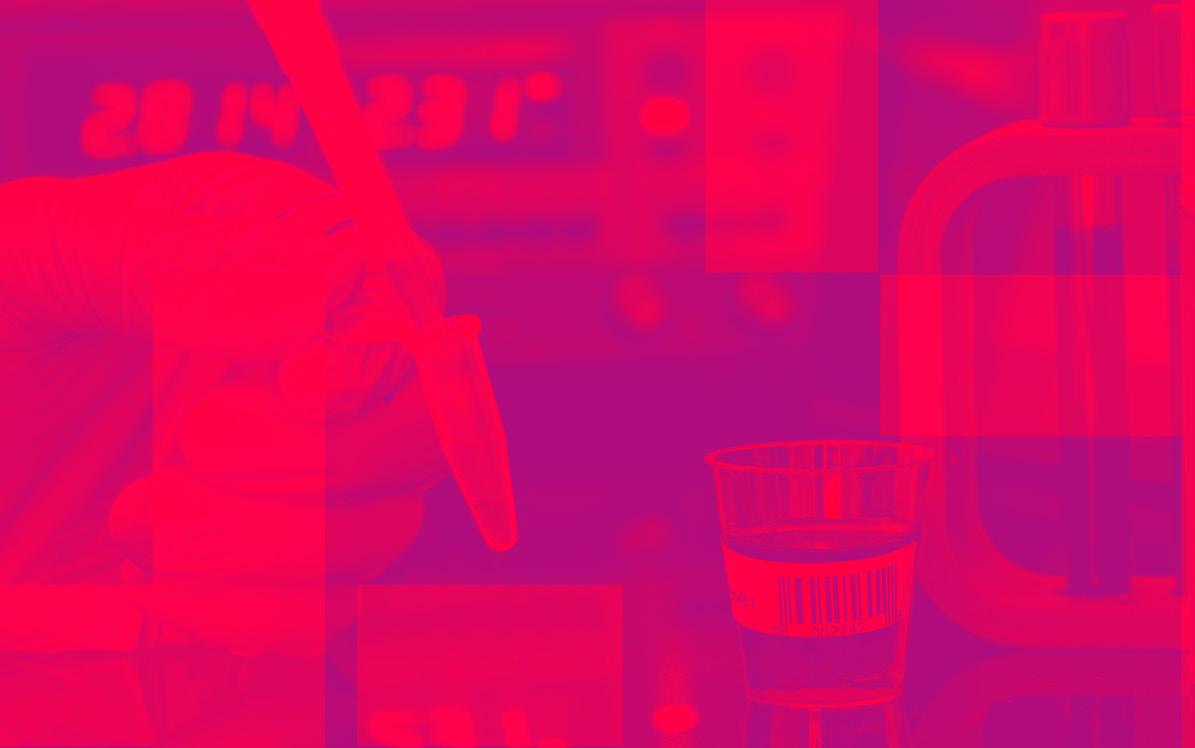
The COVID-19 pandemic brought the world to a standstill. Flights were grounded, schools were closed, businesses moved online, and some have never returned to the office.
The medical landscape responded in a positive way perhaps not seen since the Second World War. Hospitals were full, healthcare professionals worked every hour available and research teams in the UK led the charge to develop vaccines and treatments to enable us all to go ‘back to normal’.
For the world of pharmacovigilance (PV), the pandemic was a baptism of fire. The field and its scientists were placed under the spotlight in a way that many had experienced before.
The public learnt about health regulators and their roles, and terms such “adverse events” became part of general society’s vocabulary. The demand for information was high and everyone in PV had to find ways of keeping up while ensuring the testing and subsequent data were robust.
Up until that point, it may be fair to say that PV was an unknown entity by many people, even in medicine, and perhaps an underappreciated field by those who did know it. But COVID changed that.
“In a contradictory way, the pandemic was a good, silver lining for pharmacovigilance,” said Professor Saad Shakir, Director of the Drug Safety Research Unit (DSRU). “Everyone who comes across pharmacovigilance will very quickly, almost instantaneously, say how important it is and those who work with us know the vital role we play.
“But it’s not widely known as some other aspects of medicine are. But once lockdown started, almost every person in the country, in their living rooms each evening, was hearing information about pharmacovigilance.
“People’s perceptions of it changed, and they started to realise what it entailed and why it was and still is so important to carry out post-authorisation studies on our medications.”
16 ISSUE 4
SPOTLIGHT PHARMACOVIGILANCE

LEADING THE DSRU
For the past 25 years, Saad has headed up the DSRU, based near Southampton in Hampshire.
Growing up in Bagdad, Iraq, his curiosity in medicine was inspired by two uncles. One uncle was the Dean of Medicine at the University of Baghdad, where Saad completed his undergraduate medical degree, and the other was Head of the Army Medical Corps.
“The DSRU has defined me professionally to a large extent - 25 years working in in the same unit – I’ve spent more than half my career in the same place. In fact, many people I work with won’t know what I did before.”
Pharmacovigilance is the monitoring, evaluation, response to and prevention of adverse events from pharmaceutical products. For 40 years, the DSRU has conducted a broad range of safety, effectiveness and drug utilisation studies and studies to support risk management and risk minimisation of medicines.
In addition, the DSRU uses real-world data to conduct studies and systematic reviews to understand the safety of medicines and to understand the risk-benefit balance of medicines and vaccines.
When the pandemic hit, the DSRU team pivoted and threw everything at the country’s vaccine effort.
“COVID was perhaps our finest hour,” Saad added. “We diverted all our resources to understand and contribute to the understanding of the safety of COVID-19 vaccines and medicines. And I’m proud that we rose to the occasion.”
DSRU experts conducted formal benefit-risk assessments of the drugs proposed to treat Covid, including remdesivir and lopinavir and hydroxychloroquine/chloroquine and to conduct postauthorisation safety studies on all the Covid vaccines approved in the UK, including a major study on the AstraZeneca vaccine.
It offered me an opportunity to stay within the field I was inspired by and wanted to make an impact within, but in a different environment.
Saad graduated medical school in 1976 and moved to Scotland in 1980 to undertake his postgraduate training in general medicine at Glasgow teaching hospitals, becoming a member of the Royal College of Physicians.
From the UKRA, Saad moved to several roles with pharmaceutical organisations including Glaxo, Wellcome and Sanofi and in 1999 he received a call from Professor Ron Mann, who was the then Director of the DSRU.
“At the time, I didn’t fit the pharmaceutical industry, and it didn’t fit me,” Saad explained. “Ron called me to tell me he was retiring and would I consider applying for the role. It offered me an opportunity to stay within the field I was inspired by and wanted to make an impact within, but in a different environment.

17 HIL BY PROF. SAAD SHAKIR
A CHANGING LANDSCAPE
Various sources contribute to the PV evidence base, including randomised controlled trials (RCTs), spontaneous reporting and observational real-world studies. The landscape has evolved over time, witnessing improvements in the robustness of the different types of evidence used in regulatory decision-making.
A study by the DSRU showed that in Europe between 1999 and 2016, 35 products were withdrawn for safety reasons. Ninety-one percent of withdrawals were supported by spontaneous reports and/or published case reports or case series, 60% were supported by RCTs, 49% were supported by nonrandomised trials, and 40% were supported by observational studies. Meta-analyses contributed least frequently (31.4%).
The use of observational studies to support product withdrawals has increased considerably during the study period. Between 1999 and 2001, it supported 17% of withdrawals, between 2002 and 2011, it supported 26% of withdrawals and by 2012 to 2016, 80% of withdrawals were supported by observational studies (cohort, case-control, or other epidemiologic design).
Saad said: “The last 30 years has seen the PV field change quite considerably. We’ve gone from a reactive discipline to a more proactive, expansive sector. The DSRU is now a multi service provider, a broad pharmacoepidemiology unit with multiple research and monitoring safety methods.
“Spontaneous reporting was and still is the bedrock of pharmacovigilance, but we need more than one method to robustly analyse and understand the safety of a medicine. Over the last three decades or so, the inclusion of real-world data has really come to the fore. This was a big challenge during the early months of the pandemic – we just didn’t have the observational data relating to new Covid vaccines and later for Covid medicines. All the information was from clinical trials, which are very good for effectiveness and efficacy, but safety outcomes are better studied by real world studies.
“Observational studies are often overshadowed by the prominence of RCTs which are seen as the gold standard of the efficacy of drugs in development, but they are more representative of the population that the drug will serve; they are larger in numbers and patients are observed over a longer period of time; they also include many of the usual “exclusions” in RCTs, such as pregnant women, children, elderly people, and patients on multiple medications.

PUTTING THE SPOTLIGHT ON PHARMACOVIGILANCE 18 ISSUE 4
“Evidence from observational studies is key to understanding the effectiveness and safety of medicines and vaccines in the real world. They are not competitive but complementary to clinical trials. While observational studies have not been usually mandated in drug development, they have started to attract more attention. Those of us who use realworld data are not seen as background players anymore, which feels very rewarding.
“UK observational studies in particular, have been highlighted as some of the best in the world and with good reason. Our NHS system allows for longitudinal follow-ups that simply aren’t possible in many other countries. More than 90% of people are registered with an NHS GP surgery, which hold health information about each person ‘from the cradle to the grave’.”
“These health records for more than sixty million people are a gold mine for researchers. They enable a range of observational study designs to be used where researchers study exposure to a particular medicine and compare it with a control non-exposure in similar patients to establish any changes in the risk of adverse side effects.”

The whole world, including healthcare, are being digitalized. And the more data sources we have, the more we can contribute to the understanding of the safety and effectiveness of medicines.

THE FUTURE
“The data revolution isn’t going to stop,” Saad said. “The whole world, including healthcare, are being digitalized. And the more data sources we have, the more we can contribute to the understanding of the safety and effectiveness of medicines. We will move away from just spontaneous reporting of suspected adverse drug reactions to multiple epidemiological methods and evaluate the information together. We are exploring how artificial intelligence and machine learning can help us in analysis and interpretation of these more complex data sources.
19 HIL BY PROF. SAAD SHAKIR
HOW APP/DEVICE-BASED HEALTH COMPANIES CAN PROVIDE ESSENTIAL SUPPORT FOR AN OVER-PRESSURED NHS.
BILLY BOYLE CEO AT OWLSTONE MEDICAL & OMED HEALTH
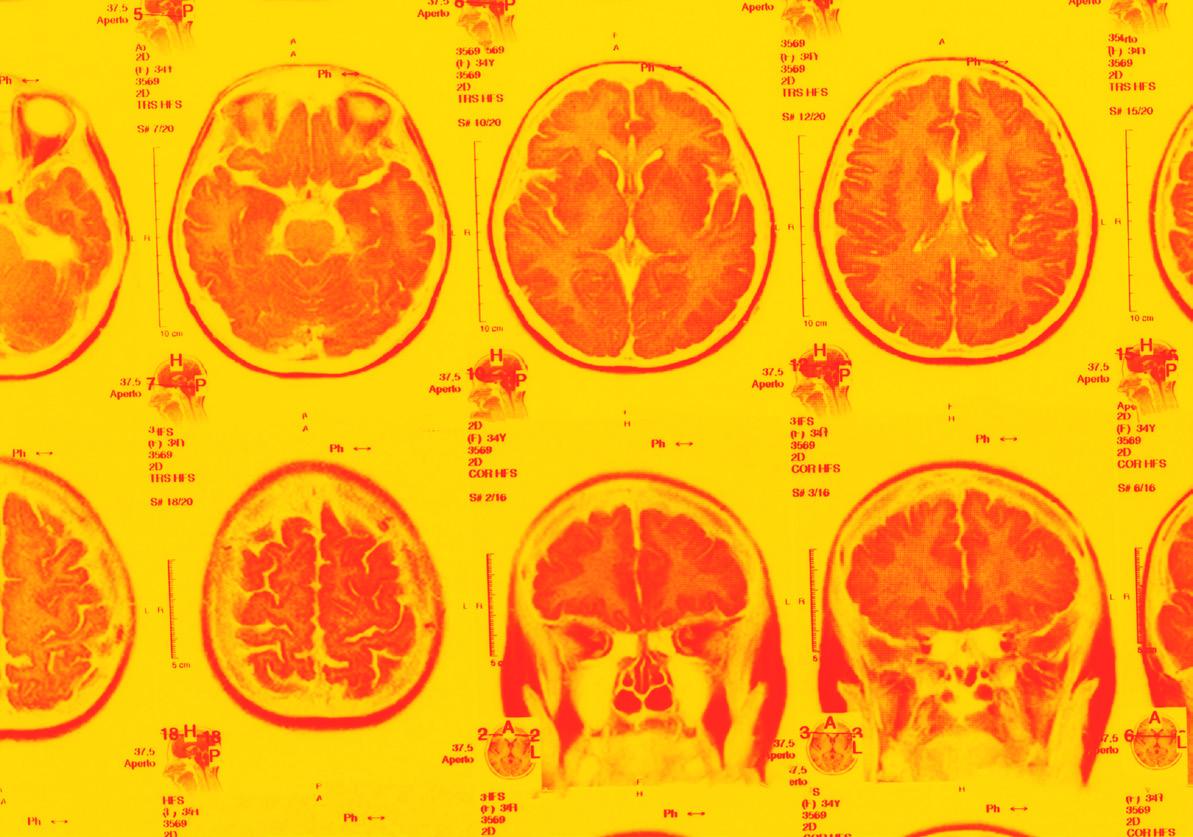
It seems like every day there is a discussion in the media about how the NHS is under pressure, and how long waiting times impact the quality of life of patients. This pressure is exacerbated by the strains of an ever-growing population, alongside the burden of global pandemics, such as COVID-19.
Due to the overwhelming demand and limited resources that the NHS deals with, exploring innovative solutions is vital. The NHS is a fantastic resource that the UK should be immensely proud of, and private companies can play a pivotal role in enabling the NHS to thrive, helping reduce waiting times, and creating better outcomes for those living with certain conditions.
20 ISSUE 4
COLORECTAL CANCER AND IBS
In the UK, 120 cases of colorectal cancer (also known as bowel cancer) are diagnosed nearly every day, making it the 4th most common cancer in the country. According to Cancer Research UK (CRUK), 54% of cases of colorectal cancer in the UK are preventable, and 53% of patients survive colorectal cancer for 10 or more years.
One of the challenges of diagnosing colorectal cancer is that many of the symptoms of bowel cancer overlap with the symptoms of irritable bowel syndrome (IBS), a disease that causes great inconvenience but does not carry a risk of death. The NHS places life-threatening conditions at a higher priority than non-lifethreatening conditions, for good reason, and it does an excellent job at providing timely care. However, there is a downside to this.
It means that patients living with conditions like IBS which are not life-threatening can often wait for a long time for treatment which can greatly improve their quality of life. Not only this but diagnosing IBS requires significant analysis and various tests to rule out more serious conditions, meaning that those living with IBS have a diagnosis pathway of on average 6 years or more.
In the UK, 120 cases of colorectal cancer
(also known as bowel cancer)
For those with IBS, driving this timeline down and bringing treatment and intervention to an earlier stage could have a significant impact on their quality of life, and support them to live life without often debilitating digestive symptoms.

21 HIL BY BILLY BOYLE
THE ROLE OF PRIVATE COMPANIES
In this area, private companies in the healthcare sector can greatly complement the NHS. The long diagnosis pathway for those living with IBS is also a big drain of resources and time demand for NHS hospitals and healthcare professionals.
OMED Health is an example of a dedicated, patientcentric private company that offers breath-based devices and supporting resources for a range of gastrointestinal conditions. At OMED Health, we are building a new clinical pathway for people who suffer from chronic digestive symptoms to gain access to at-home testing kits to diagnose conditions like small intestinal bacterial overgrowth (SIBO), and these pathways can greatly support the NHS.
This means that patients can take appropriate actions to manage their symptoms more quickly than with multiple visits to the GP over a series of years.

The long diagnosis pathway for those living with IBS is also a big drain of resources and time demand for NHS hospitals and healthcare professionals.
THE ROLE OF PRIVATE COMPANIES
In this area, private companies in the healthcare sector can greatly complement the NHS. The long diagnosis pathway for those living with IBS is also a big drain of resources and time demand for NHS hospitals and healthcare professionals.
OMED Health is an example of a dedicated, patient-centric private company that offers breath-based devices and supporting resources for a range of gastrointestinal conditions. At OMED Health, we are building a new clinical pathway for people who suffer from chronic digestive symptoms to gain access to at-home testing kits to diagnose conditions like small intestinal bacterial overgrowth (SIBO), and these pathways can greatly support the NHS.
This means that patients can take appropriate actions to manage their symptoms more quickly than with multiple visits to the GP over a series of years.
HOW APP/DEVICE-BASED HEALTH COMPANIES CAN PROVIDE ESSENTIAL SUPPORT FOR AN OVER-PRESSURED NHS. 22 ISSUE 4

We believe in providing comprehensive insights that transcend industry boundaries. We invite you to delve into the expertise offered by our other publications - Hydrogen Industry Leaders and Housing Industry Leaders - each dedicated to the pursuit of net zero solutions.
You can also follow us on LinkedIn and X (Twitter) to keep up to date with all the latest news in the Health sector.
ABOUT US WE ARE
23









 Floyd March Editor
Paul Rose
Graphic Designer
Floyd March Editor
Paul Rose
Graphic Designer





























